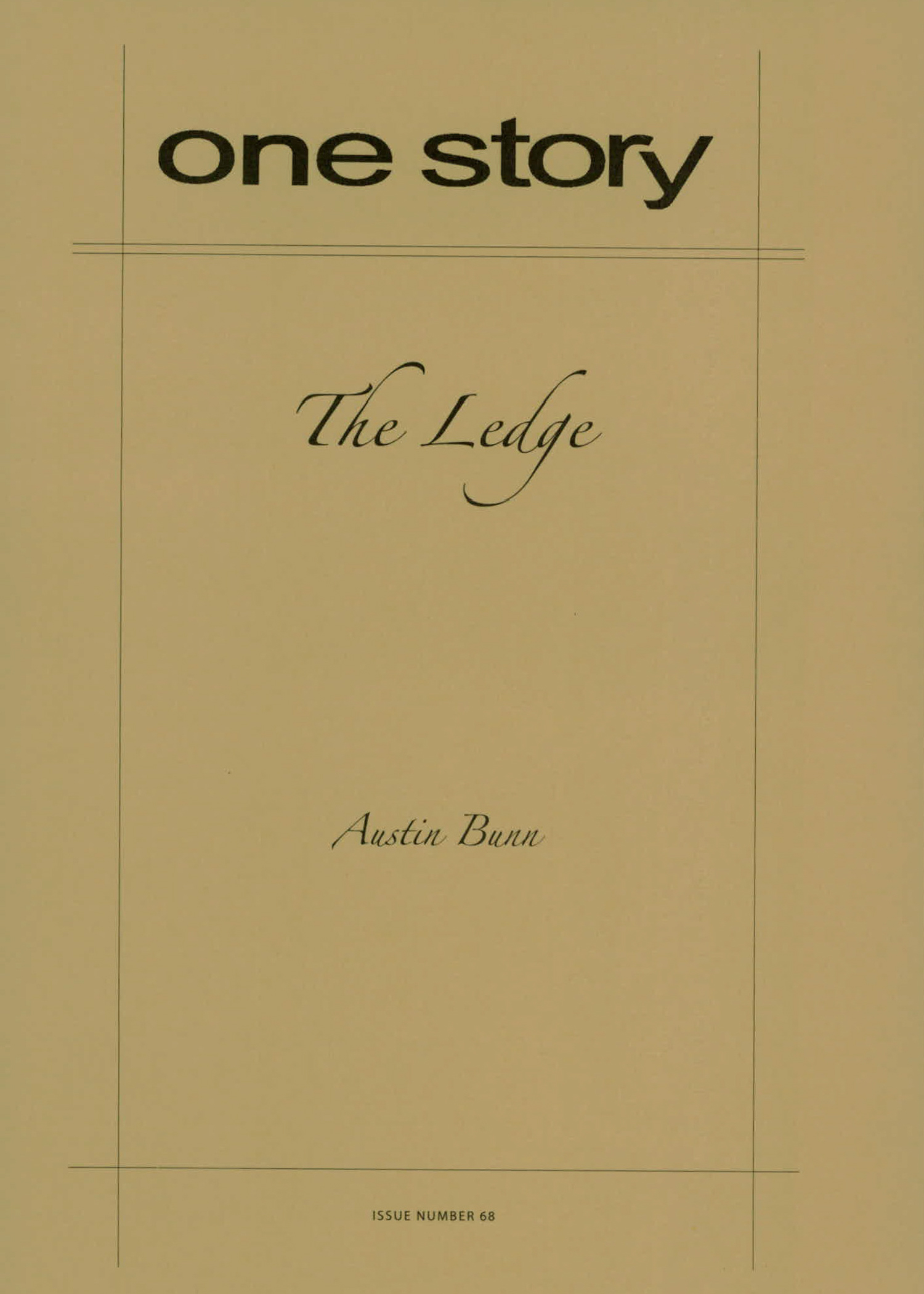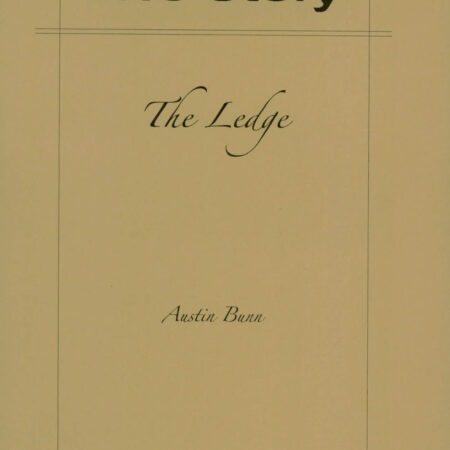
The Ledge
$2.50
34 in stock
Excerpt
Mother, I have seen such marvels. Like the ocean aglow at night with a cold green fire and a fish with a child’s face and two fleshy whiskers. (No man would eat it. We blessed the creature and tossed it back.) I’ve seen a corpse with golden hair in a boat set adrift; his eyes were the slits on a newly born kitten. When the boatswain came-to after three days on the garrucha for the crime of sodomy—his wrists tied behind him and hoisted above the deck so that his arms tore and jellied—he asked, “Am I dead?” and soon he was. I looked to Diego, who dropped his dark eyes in shame, and I saw that too. Three hundred leagues into the Ocean Sea, we came upon a floating meadow, crabs and petrels tinkering along its dank branches and fronds. A palm tree had taken root there and I imagined, briefly, the coastline of Seville, of home.
Austin Bunn
Austin Bunn has worked as a boat carpenter (poorly), game designer for reality television (admirably), book ghostwriter (paid handsomely), and (primarily) as a magazine journalist. His writing has appeared in The Best American Science and Nature Writing 2004, The New York Times Magazine, Wired, The Advocate and other magazines now dead to him. He is currently at the Writers’ Workshop at the University of Iowa. This is his first published piece of fiction. Thanks to Sam Lipsyte and to you for reading this.
Q&A by Hannah Tinti
- HT: What was the most challenging aspect of writing this story?
- AB: The beginning. When and where do you enter a ghost story? The first draft began with the appearance of the sea serpents, but that felt busy and rushed. The second draft started with some ridiculously overblown prose (“It shall be known that we were warned...”), and in a story with so much antique language, that’s saying something. This third and final draft busted chronology and connected the story with its the most haunting moment. I trusted it.
- HT: The details of the Elena feel so exact. Have you done much research on boats?
- AB: I’m an amateur sailor (Vice-Vice Commodore of the Iowa Sail Club!) and my friend and former boss Jerry Allen, a boat carpenter on Martha’s Vineyard, is an immensely patient teacher. But the best research I did was to read Samuel Elliot Morrison’s absorbing Admiral of the Ocean Sea, in which he retraces Columbus’s Atlantic crossing in a sailboat. It comes with a fold-out map at the beginning. I love books with maps in the flyleaf.
- HT: The description of Peralonso’s map of the flat world, with the words here be monsters seemed to capture the feel of the entire narrative. Why did you choose to set your story in the past? And was it difficult to write about this time period convincingly?
- AB: Many people have asked me this. I think of this story as a queer, medieval, sea-faring ghost story. What the hell is that? I think I’m drawn to periods of time when metaphysical and spiritual issues—questions, say, about the limits of human knowledge—are testing and transforming culture. It wasn’t hard to write about the 15th century, largely because my mother is a Spanish medieval scholar and professor. I grew up with Don Quixote everywhere, which is maybe also why I’m drawn to figments, delusion, and adventure.
- HT: How important do you feel religion is to the plot of The Ledge? Why did you make Peralonso both a Catholic and a Jew?
- AB: Good question. Even though the story is a spiritual quest, the first draft of this story did not investigate Peralonso’s religious faith. Then Marilynne Robinson read it and said, “How the hell does a 15th century peasant boy end up speaking like this?” (I’m paraphrasing.) I spent a month researching Peralonso’s background, trying to find a way to make him literate, not easy for a 15th century baker’s son. The more I read, the more fascinated I became with the world of the marranos, or secret Jews, who escaped the Inquisition by hiding their religion. (Interestingly: Columbus left the same year as the expulsion of the Jews began. The world gets wider and more narrow at the same time...) As I did, I came to a deeper understanding not just of Peralonso’s erudition but of the religious debate in the story, the notions of Catholic individual salvation and the afterlife and Judiasm’s emphasis on right acts in the present. To me, this was at heart of the divide that splits the crew of the ship.
- HT: Was the love story of Diego and Peralonso a planned part of the story? Or did it work its way in as the plot unfolded?
- AB: It was there from the start. But it was tricky to try to describe same-sex attraction in a time and place when acting on it meant getting keel-hauled (dragged through the water) or tied to the mast for days until you died. Of course, death is one of the motifs of the story, and I wanted to keep that menace very much alive on the deck. I’m gay, and any time I read one of these sailing books, I looked up “homosexuality” and “sodomy” in the index. Inevitably, the gay history of sailing is written in “honor” slayings and persecution.
- HT: How long did it take you to complete this story?
- AB: I wrote the first draft of this story in three weeks in the fall of 2003, in two-hour snatches of time, listening to John Tavener’s “Eternity’s Sunrise” over and over. Sam Lipsyte, my teacher at the Queens-based writing center Buzzer 30 (and a great guy), read it and gave me the permission I needed to trust the weirdness. I came out to Iowa and Marilynne Robinson read “The Ledge”, dismissed it, and then won the Pulitzer. I put the story aside. In December 2004, I spent a month inserting all this irrelevant material about the Inquisition, trying to earn my “historical-novel” merit badge. Then I cut it all. I reentered the story last August.
- HT: What are you working on now?
- AB: I feel I’m supposed to say I’m “hard at work on my novel.” But I’m not. I’m revising a play for a developmental reading (at the Playwrights Theater of New Jersey) and revising a novella. I’m mostly at work reading Anna Karenina.
